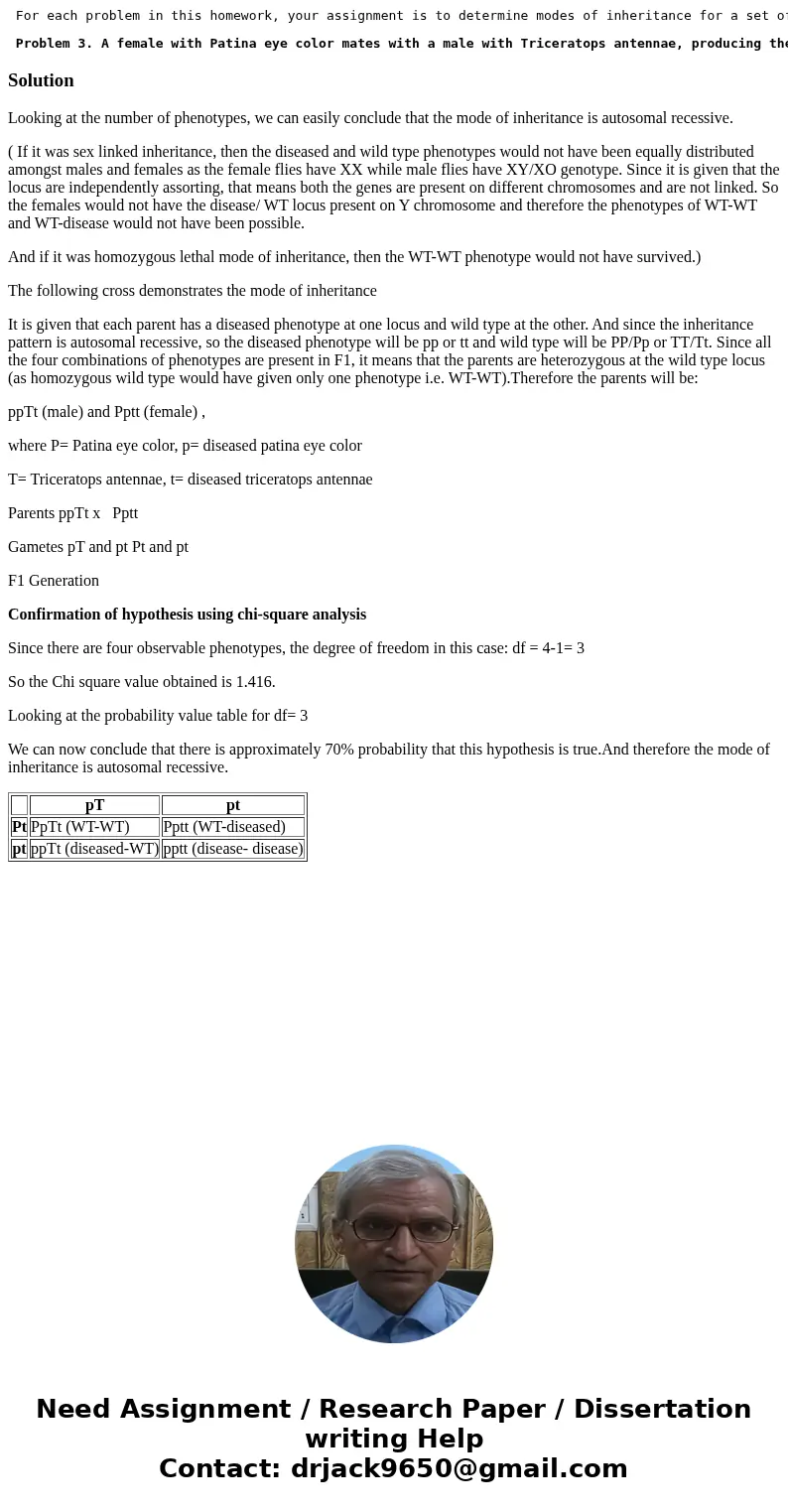For each problem in this homework your assignment is to dete
For each problem in this homework, your assignment is to determine modes of inheritance for a set of phenotypes each of which is determined by genotypes at two independently assorting loci. The data come from an alien species of fly whose genetics is identical to that of earth flies. As part of your assignment, you must confirm your hypothesized modes of inheritance by applying a chi-square analysis. NOTE ABOUT DEGREES OF FREEDOM: In situations where the observed counts and the expected counts for a category are both 0, that category does not figure into the chi-square calculation, so that the degrees of freedom is reduced by one in such situations. The possible modes of inheritance are: (i) Autosomal recessive; (ii) Homozygous lethal (dominant); (iii) Sex-linked recessive. The Sex-linked recessive mode can only occur in females parents. Counts of phenotype pairs for the F1 generation give you clues as to the mode of inheritance of each phenotype. Good luck! ONE PHENOTYPE PER PARENT, TWO PHENOTYPES TOTAL For the Tratagorian Kumbus Fly, that lives on the planet Zeon, parental matings occur only among flies in which each parent has a disease phenotype at one locus and is wild-type at the other locus.
Problem 3. A female with Patina eye color mates with a male with Triceratops antennae, producing the following counts: F1 Generation Males WT-WT Disease-WT WT-Disease Disease-Disease 0 260 0 246 Females WT-WT Disease-WT WT-Disease Disease-Disease 260 0 238 0
Solution
Looking at the number of phenotypes, we can easily conclude that the mode of inheritance is autosomal recessive.
( If it was sex linked inheritance, then the diseased and wild type phenotypes would not have been equally distributed amongst males and females as the female flies have XX while male flies have XY/XO genotype. Since it is given that the locus are independently assorting, that means both the genes are present on different chromosomes and are not linked. So the females would not have the disease/ WT locus present on Y chromosome and therefore the phenotypes of WT-WT and WT-disease would not have been possible.
And if it was homozygous lethal mode of inheritance, then the WT-WT phenotype would not have survived.)
The following cross demonstrates the mode of inheritance
It is given that each parent has a diseased phenotype at one locus and wild type at the other. And since the inheritance pattern is autosomal recessive, so the diseased phenotype will be pp or tt and wild type will be PP/Pp or TT/Tt. Since all the four combinations of phenotypes are present in F1, it means that the parents are heterozygous at the wild type locus (as homozygous wild type would have given only one phenotype i.e. WT-WT).Therefore the parents will be:
ppTt (male) and Pptt (female) ,
where P= Patina eye color, p= diseased patina eye color
T= Triceratops antennae, t= diseased triceratops antennae
Parents ppTt x Pptt
Gametes pT and pt Pt and pt
F1 Generation
Confirmation of hypothesis using chi-square analysis
Since there are four observable phenotypes, the degree of freedom in this case: df = 4-1= 3
So the Chi square value obtained is 1.416.
Looking at the probability value table for df= 3
We can now conclude that there is approximately 70% probability that this hypothesis is true.And therefore the mode of inheritance is autosomal recessive.
| pT | pt | |
|---|---|---|
| Pt | PpTt (WT-WT) | Pptt (WT-diseased) |
| pt | ppTt (diseased-WT) | pptt (disease- disease) |

 Homework Sourse
Homework Sourse